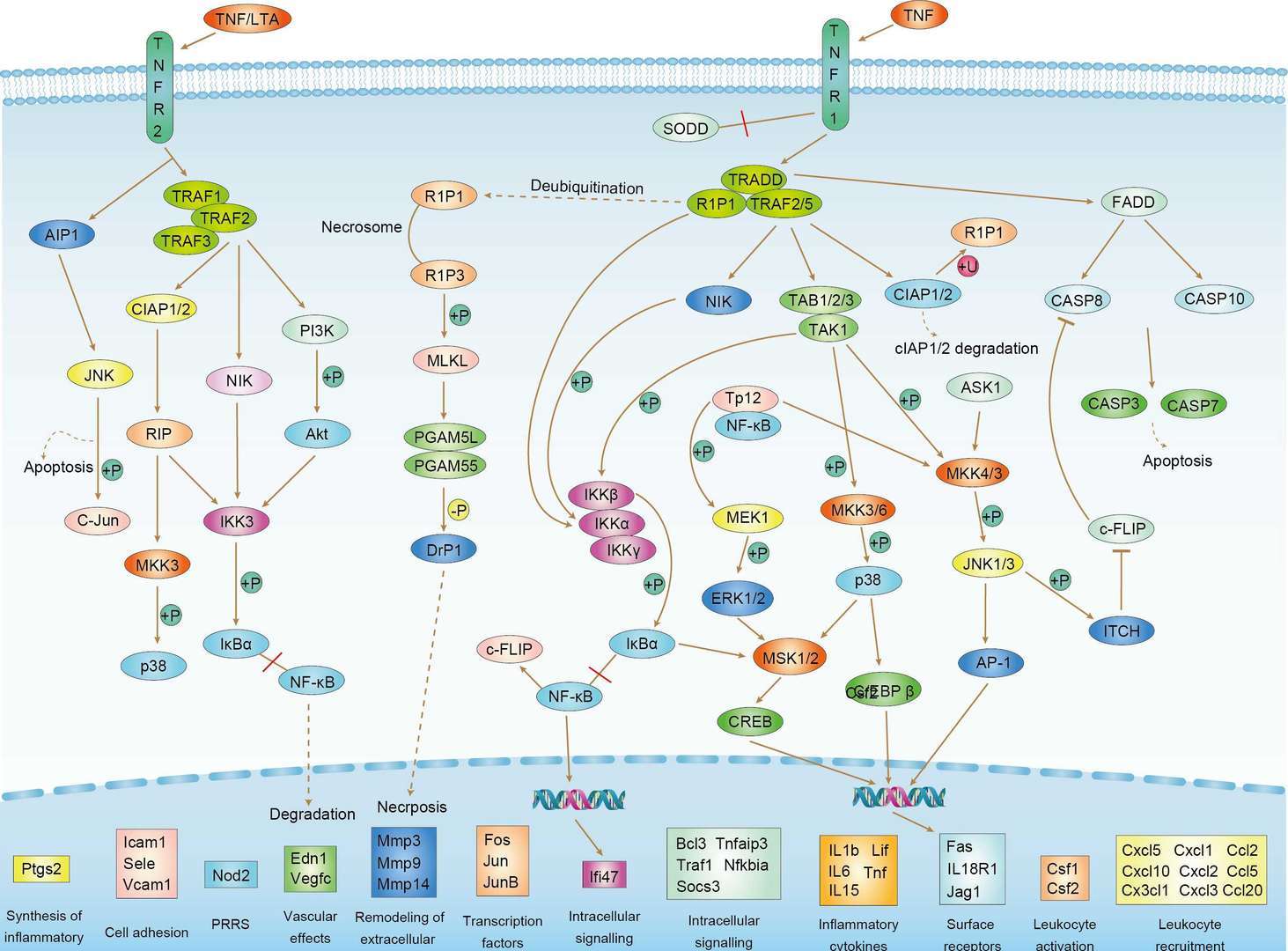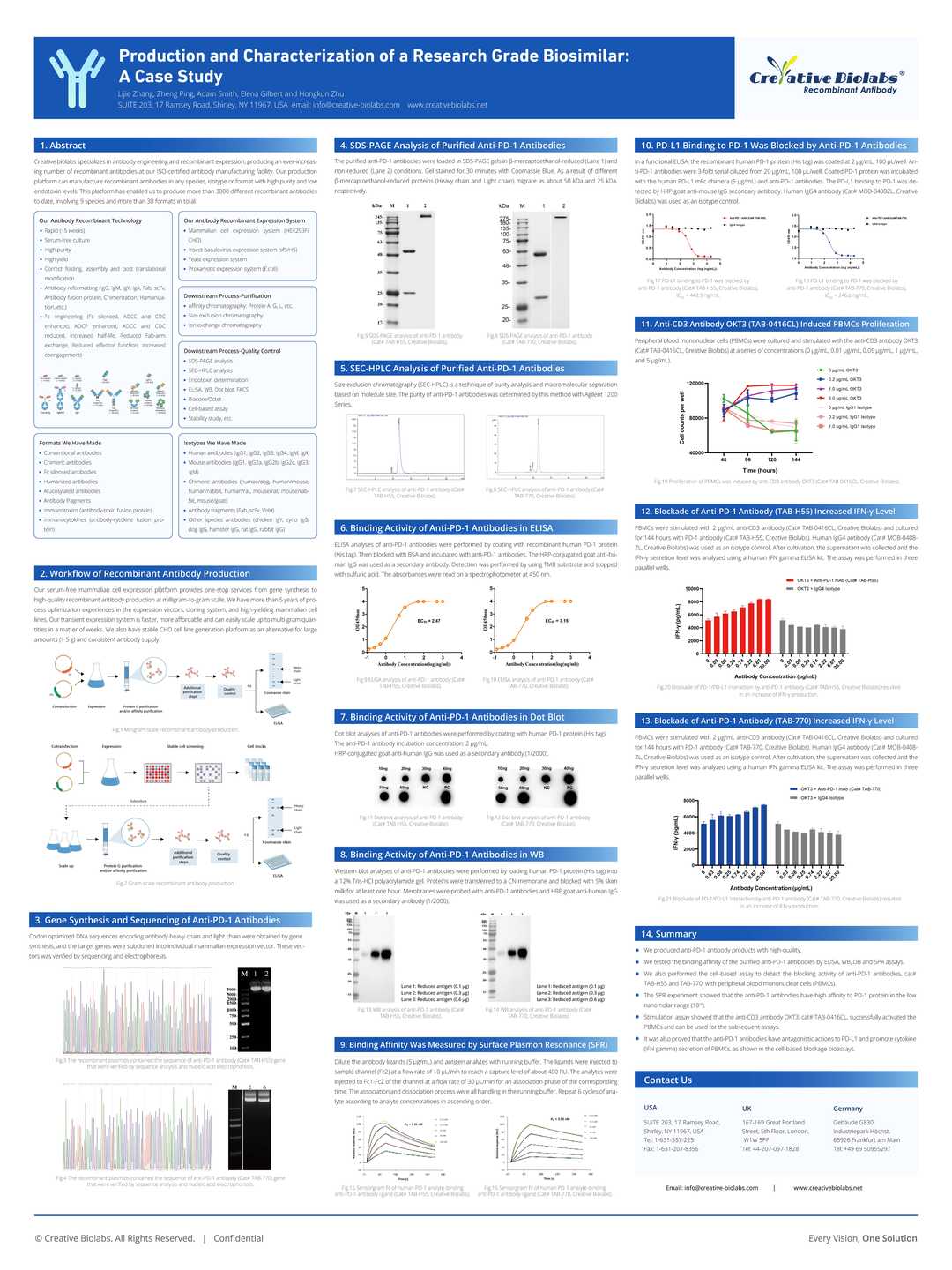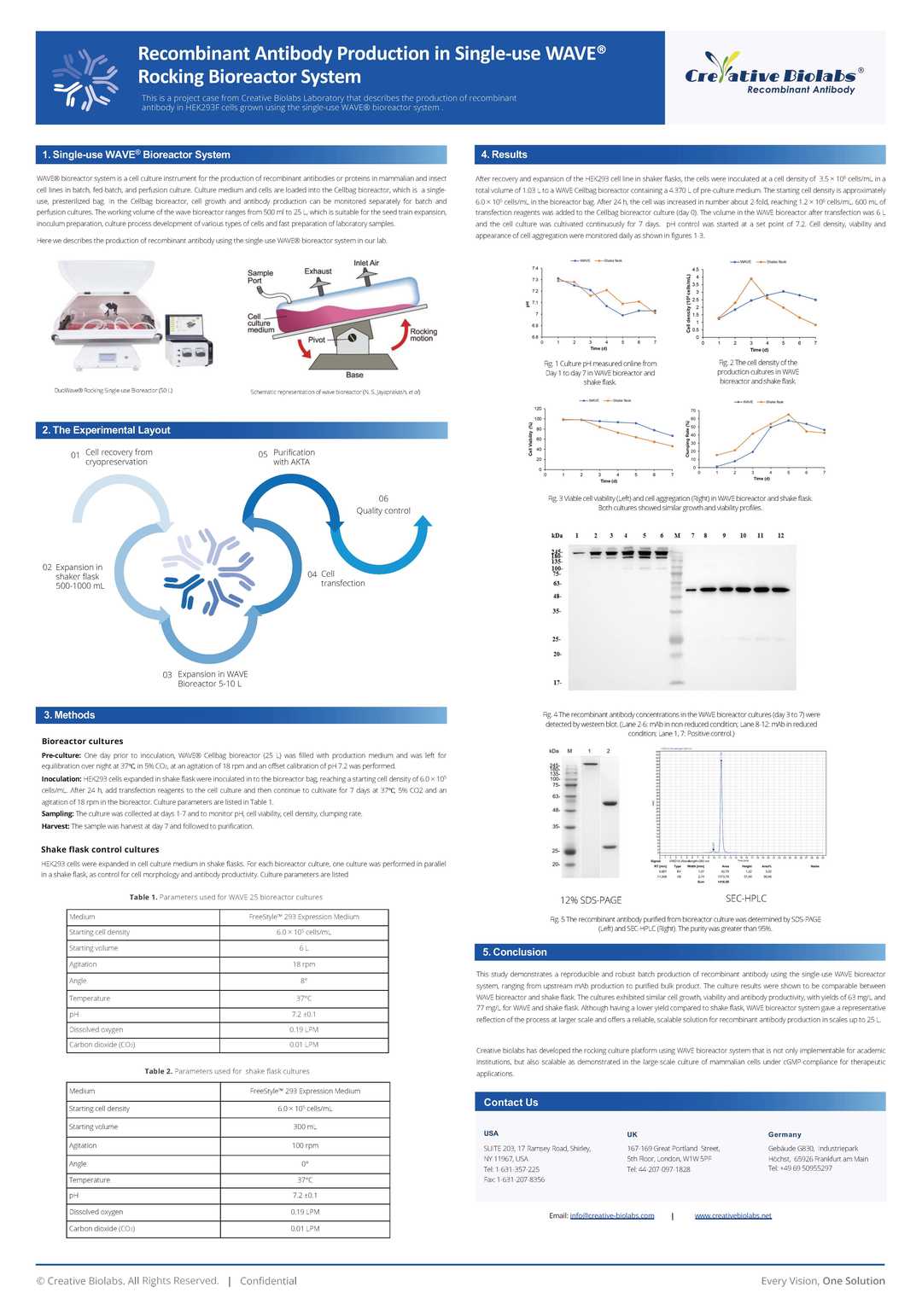Rabbit Anti-CEBPB Recombinant Antibody (VS3-CJ720)
CAT#: VS3-CJ720
This product is a rabbit antibody that recognizes human, mouse, and rat CEBPB.








Specifications
- Immunogen
- Recombinant protein
- Host Species
- Rabbit
- Type
- Rabbit IgG
- Specificity
- Human, Mouse, Rat CEBPB
- Species Reactivity
- Human, Mouse, Rat
- Applications
- WB, ICC, IF, IP, FC
- Conjugate
- Unconjugated
Product Property
- Purification
- Protein A affinity purified
- Purity
- >95% as determined by SDS-PAGE
- Format
- Liquid
- Buffer
- 40% Glycerol, 1% BSA, TBS, pH7.4.
- Preservative
- 0.05% Sodium Azide
- Storage
- Store at 4°C for short term. Aliquot and store at -20°C for long term. Avoid repeated freeze/thaw cycles.
Applications
- Application Notes
- This antibody has been tested for use in Western Blot, Immunocytochemistry, Immunofluorescence, Immunoprecipitation, Flow Cytometry.
Target
- Alternative Names
- TCF5; IL6DBP; NF-IL6; C/EBP-beta
- Gene ID
- 1051
- UniProt ID
- P17676
- Sequence Similarities
- Belongs to the bZIP family. C/EBP subfamily.
- Cellular Localization
- Cytoplasm, Nucleus
- Post Translation Modifications
- Methylated. Methylation at Arg-3 by CARM1 and at Lys-43 by EHMT2 inhibit transactivation activity. Methylation is probably inhibited by phosphorylation at Thr-235.
Sumoylated by polymeric chains of SUMO2 or SUMO3 (PubMed:12810706).
Sumoylation at Lys-174 is required for inhibition of T-cells proliferation. In adipocytes, sumoylation at Lys-174 by PIAS1 leads to ubiquitination and subsequent proteasomal degradation. Desumoylated by SENP2, which abolishes ubiquitination and stabilizes protein levels (By similarity).
Ubiquitinated, leading to proteasomal degradation.
Phosphorylated at Thr-235 by MAPK and CDK2, serves to prime phosphorylation at Thr-226 and Ser-231 by GSK3B and acquire DNA-binding as well as transactivation activities, required to induce adipogenesis. MAPK and CDK2 act sequentially to maintain Thr-235 in the primed phosphorylated state during mitotical cloning expansion and thereby progression of terminal differentiation. Phosphorylation at Thr-266 enhances transactivation activity. Phosphorylation at Ser-325 in response to calcium increases transactivation activity. Phosphorylated at Thr-235 by RPS6KA1 (PubMed:11684016).
O-glycosylated, glycosylation at Ser-227 and Ser-228 prevents phosphorylation on Thr-235, Ser-231 and Thr-226 and DNA binding activity which delays the adipocyte differentiation program.
Acetylated. Acetylation at Lys-43 is an important and dynamic regulatory event that contributes to its ability to transactivate target genes, including those associated with adipogenesis and adipocyte function. Deacetylation by HDAC1 represses its transactivation activity. Acetylated by KAT2A and KAT2B within a cluster of lysine residues between amino acids 129-133, this acetylation is strongly induced by glucocorticoid treatment and enhances transactivation activity.
- Protein Refseq
- NP_001272807.1; NP_001272808.1; NP_005185.2
- Function
- Important transcription factor regulating the expression of genes involved in immune and inflammatory responses (PubMed:1741402, PubMed:9374525, PubMed:12048245, PubMed:18647749).
Also plays a significant role in adipogenesis, as well as in the gluconeogenic pathway, liver regeneration, and hematopoiesis. The consensus recognition site is 5'-T[TG]NNGNAA[TG]-3'. Its functional capacity is governed by protein interactions and post-translational protein modifications. During early embryogenesis, plays essential and redundant roles with CEBPA. Has a promitotic effect on many cell types such as hepatocytes and adipocytes but has an antiproliferative effect on T-cells by repressing MYC expression, facilitating differentiation along the T-helper 2 lineage. Binds to regulatory regions of several acute-phase and cytokines genes and plays a role in the regulation of acute-phase reaction and inflammation. Also plays a role in intracellular bacteria killing (By similarity).
During adipogenesis, is rapidly expressed and, after activation by phosphorylation, induces CEBPA and PPARG, which turn on the series of adipocyte genes that give rise to the adipocyte phenotype. The delayed transactivation of the CEBPA and PPARG genes by CEBPB appears necessary to allow mitotic clonal expansion and thereby progression of terminal differentiation (PubMed:20829347).
Essential for female reproduction because of a critical role in ovarian follicle development (By similarity).
Restricts osteoclastogenesis: together with NFE2L1; represses expression of DSPP during odontoblast differentiation (By similarity).
Isoform 2: Essential for gene expression induction in activated macrophages. Plays a major role in immune responses such as CD4+ T-cell response, granuloma formation and endotoxin shock. Not essential for intracellular bacteria killing.
Isoform 3: Acts as a dominant negative through heterodimerization with isoform 2 (PubMed:11741938). Promotes osteoblast differentiation and osteoclastogenesis (By similarity).
Customer Review
There are currently no Customer reviews or questions for VS3-CJ720. Click the button above to contact us or submit your feedback about this product.
Submit Your Publication
Published with our product? Submit your paper and receive a 10% discount on your next order! Share your research to earn exclusive rewards.
Related Signaling Pathways
Downloadable Resources
Download resources about recombinant antibody development and antibody engineering to boost your research.
Product Notes
This is a product of Creative Biolabs' Hi-Affi™ recombinant antibody portfolio, which has several benefits including:
• Increased sensitivity
• Confirmed specificity
• High repeatability
• Excellent batch-to-batch consistency
• Sustainable supply
• Animal-free production
See more details about Hi-Affi™ recombinant antibody benefits.
Datasheet
MSDS
COA
Certificate of Analysis LookupTo download a Certificate of Analysis, please enter a lot number in the search box below. Note: Certificate of Analysis not available for kit components.
Protocol & Troubleshooting
We have outlined the assay protocols, covering reagents, solutions, procedures, and troubleshooting tips for common issues in order to better assist clients in conducting experiments with our products. View the full list of Protocol & Troubleshooting.
Isotype Control
- CAT
- Product Name
Secondary Antibody
- CAT
- Product Name
See other products for "CEBPB"
Select a product category from the dropdown menu below to view related products.
| CAT | Product Name | Application | Type |
|---|---|---|---|
| MOB-2518z | Mouse Anti-CEBPB Recombinant Antibody (clone 6H10) | WB, IHC, IP | Mouse IgG |
| MOB-2498MZ | Recombinant Mouse Anti-Mouse CEBPB Antibody (clone 2I8) | ICC, IF, IP, WB | Mouse antibody |
| MRO-0198-CN | Rabbit Anti-CEBPB Recombinant Antibody (clone CBACN-076) | WB, IF, IP, FC | Rabbit IgG |
| VS3-XY492 | Mouse Anti-CEBPB Recombinant Antibody (clone 3H9) | ELISA, WB, FC | Mouse IgG1 |
| VS7-HM700 | Mouse Anti-CEBPB Recombinant Antibody (clone CBL153HM) | WB, FCM, ELISA | Mouse IgG |
| CAT | Product Name | Application | Type |
|---|---|---|---|
| MOR-0654 | Hi-Affi™ Rabbit Anti-CEBPB Recombinant Antibody (clone DS654AB) | WB, FC, IP | Rabbit IgG |
| MOR-0069-FY | Rabbit Anti-CEBPB Recombinant Antibody (clone AFY0040) | ICC, IHC-P, WB | Rabbit IgG |
| CAT | Product Name | Application | Type |
|---|---|---|---|
| VS-0325-XY420 | Anti-CEBPB Immunohistochemistry Kit | IHC | |
| VS-0525-XY1362 | Anti-Human CEBPB Immunohistochemistry Kit | IHC |
| CAT | Product Name | Application | Type |
|---|---|---|---|
| VS13-YC207 | CytoStream™ Rabbit Anti-CEBPB Recombinant Antibody (VS13-YC207) | WB, FC, IP | Rabbit IgG |
Popular Products

Application: IF, IP, Neut, FuncS, ELISA, FC, WB

Application: WB, IF, IP, Neut, FuncS, ELISA, FC

Application: FC, IP, ELISA, Neut, FuncS, IF, ICC

Application: ELISA, IP, FC, FuncS, Neut, IF, ICC

Application: ELISA, IP, FC, FuncS, Neut, IF, IHC

Application:

Application: FC, FRET, Internalization

Application: ELISA, IHC, FC, IP, IF, FuncS

Application: EM, ELISA, ICC, IHC-Fr, IHC-P, WB
For research use only. Not intended for any clinical use. No products from Creative Biolabs may be resold, modified for resale or used to manufacture commercial products without prior written approval from Creative Biolabs.
This site is protected by reCAPTCHA and the Google Privacy Policy and Terms of Service apply.











 TNF Signaling Pathway
TNF Signaling Pathway















